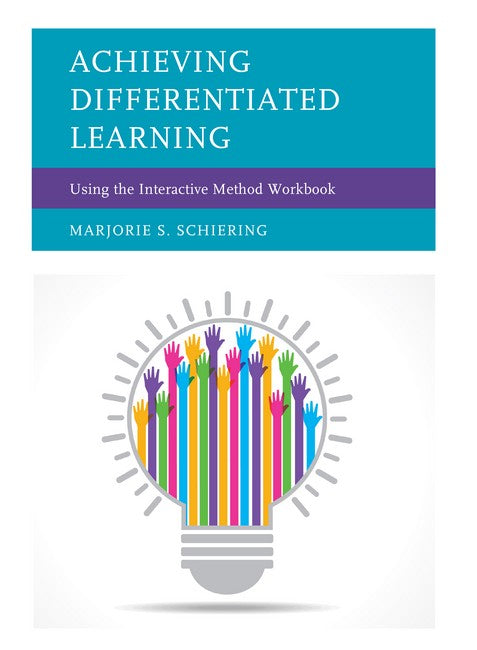Prelude
Foreword
Preface
Acknowledgments
Introduction
Part One: Explaining the interactive method (IM) regarding thinking skills, memory, and classroom implementation
Chapter One: Explaining The Interactive Method (IM): Experience-based Teaching and Learning
Chapter Two: Reciprocal Thinking, Cognitive Collective and Memories The Teaching of Thinking
Chapter Three: Addressing Different Waysa through Assignments, Requirements, and Purposes
Part two: different learners = different ways: the how toa of the IMa
Chapter Four: Six Specific Types of Differention: Explanation and Example
Chapter Five: Different Ways with 25- Examples
Chapter Six: Different Ways with 28-Examples
Chapter Seven: Different Ways with 13- Examples, Including Technology
Chapter Eight: Activity-based Learning Centers/ABLC: 6-Tri-fold Boards
Chapter Nine: Graphic Organizers/Text Structures and Four Interactive Instructional Resources: Directions and Application
Part three: personal commentaries on special needs and different abilities + author's closing thoughts
Chapter Ten: Personal Perspectives Regarding Parenting and/or Teaching Different Abilities and Special Needs Students
Perspectives on a Learner's Dyslexia: Patricia Eckardt
From the Heart: Having Different Abilities Children: Their Dad's Narrative:
Timothy Ryley
Teaching Special Education Technology: Clare King
Chapter Eleven: author's closing thoughts
References
About the author
Description
Prelude Foreword Preface Acknowledgments Introduction Part One: Explaining the interactive method (IM) regarding thinking skills, memory, and classroom implementation Chapter One: Explaining The Interactive Method (IM): Experience-based Teaching and Learning Chapter Two: Reciprocal Thinking, Cognitive Collective and Memories The Teaching of Thinking Chapter Three: Addressing "Different Ways" through Assignments, Requirements, and Purposes Part two: different learners = different ways: the "how to" of the "IM" Chapter Four: Six Specific Types of Differention: Explanation and Example Chapter Five: Different Ways with 25- Examples Chapter Six: Different Ways with 28-Examples Chapter Seven: Different Ways with 13- Examples, Including Technology Chapter Eight: Activity-based Learning Centers/ABLC: 6-Tri-fold Boards Chapter Nine: Graphic Organizers/Text Structures and Four Interactive Instructional Resources: Directions and Application Part three: personal commentaries on special needs and different abilities + author's closing thoughts Chapter Ten: Personal Perspectives Regarding Parenting and/or Teaching Different Abilities and Special Needs Students Perspectives on a Learner's Dyslexia: Patricia Eckardt From the Heart: Having Different Abilities Children: Their Dad's Narrative: Timothy Ryley Teaching Special Education Technology: Clare King Chapter Eleven: author's closing thoughts References About the author

